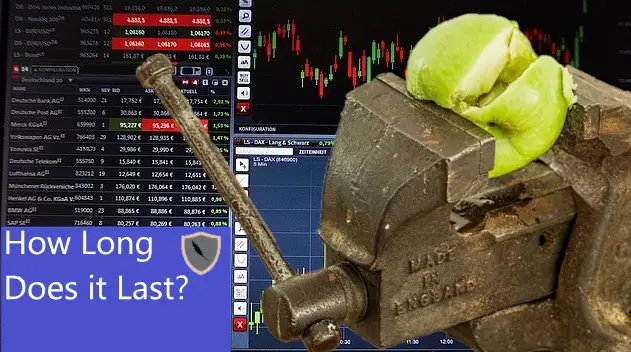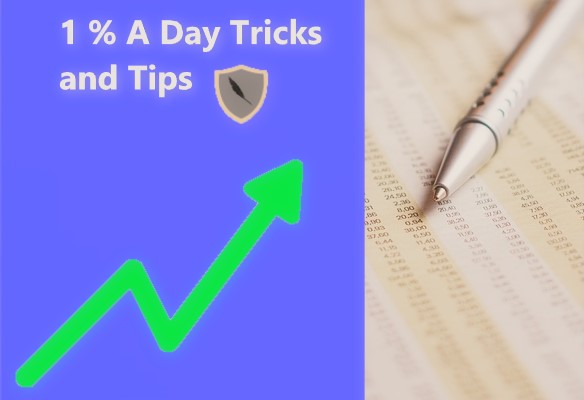Learning how to analyze a stock before you take the plunge to invest in it is vital to succeeding in the market. Unfortunately too many people focus on simple metrics such as P/E, EBITDA, Book Value, or EPS. All of these are important but it only gives you a snapshot of the much larger picture.
By far the simplest and most effective way to analyze a stock before investing is simply by doing intrinsic research on the company paired with competitive analysis of the company’s competitors.
If this didn’t make any sense to you, don’t worry. I am going to demonstrate how you can save countless hours on research while also making massive returns.
Here at Chronohistoria I teach people how to become professional stock analysts and return above normal market returns (Alpha). As such if you like content like this then feel free to subscribe to the free newsletter.
Without further ado, let’s jump into the simple guide on how to analyze a stock before investing.
Why Intrinsic and Competitive Analysis?
The answer is relatively simple. Most junior analysts get bogged down in the weeds of the typical valuation metrics and forget to look at the larger picture.
If you spend your entire day weighing P/E and EPS between a couple potential investments you are going to completely miss the most important metric of them all. How well a company can capitalize upon its sector or industry.
Yes, the typical valuation metrics of P/E, EPS, Book Value, EBITDA, and DCFs are important. However they pale in comparison to a sector or industry competitive overview.
The reason behind this is because the typical valuation metrics look at a potential investment in a vacuum. They fail to account for growth potential, marketing, executive team, or product scalability.
The best thing about this? By focusing your efforts on competitive and intrinsic analysis you can ‘scan’ a company lighting quickly.
On average it will take me about 10-15 minutes to figure out if a company is even worth my time to look into further. I am going to show you how to do this so that you can save countless hours on research.
First: Intrinsic Valuation on Potential Investment
The first thing you should do is perform an intrinsic valuation on a company.
To do this you will be looking at their 10-k document to understand their business model, product, finances, risks, and executive team. The reason behind this is you want to figure out if the company can be successful if they were the only person in their potential industry.
We are not looking at competitors yet. We are simply looking for how well a company can operate on its own without any outside pressures. Competitive analyses will come later on.
Going Through the 10-K
Here is the 10-k file for Gamestop.(source)
Within this 10-k you are going to be looking for the following sections.
- Business
- Finances
- Risks
- Executive Team
Here is an image demonstrating what to look for in the table of contents.
The reason that I recommend you quickly go through these sections is because you will get a firm understanding of what your potential investment is by only reading a couple pages worth of information.
Business Section
In the Business Section you are going to be looking for scalability. Ask yourself the following questions; In a perfect world how fast could your potential company scale. What is their product? What is their target audience? How well do they market the product?
This should take you around 4-6 minutes to do effectively. If the company can’t scale efficiently, or their product is flawed. Move on to the next target investment.
Risk Factors
In the risk factors section you are looking for what your potential investment company sees as their major risks going forward. It’s important to remember that this is what the executives at the company see, not you.
Here is where you can gauge the executives’ risk tolerance. Do you think that a sector is going to crash but it’s not listed in the risk section? Go see why.
Generally however, the risk section is to give you a roadmap to hedge with. This section should take you about 2-3 minutes to skim through.
Finances
In the finances section you are looking for how healthy the company’s cash flow is. Do they make money currently? If so, is it above their current overhead?
That is all. Just see how well the company can make money.
This is going to give you an idea of how well the target company’s business model works. If you see bad finances, then chances are it’s a bad investment.
I’m not joking when I say that once you practice reading this section you can go through it in 30 seconds to 2 minutes.
Executive team
Everyone forgets to look at the most important section, the executives.
Here you are simply going to Google the board of directors and major positions (CEO, CFO, CLO).
The goal in this step is to see if the executives have the resources to pull from to make the company successful. Resources are financial loan lines, sitting on other companies boards, professional experience in an emerging sector the company is entering.
This step should take you the longest to do. For a professional the average time is around 10-12 minutes. It can be faster if the executive team is small.
Here you are asking yourself “does the company have the talent to accomplish their business model?”
Second: Competitive Analysis
Ok, so now you should be able to summarize what your potential investment does, its strengths, and its potential weaknesses.
Now its time to figure out how well it capitalize upon its sector in relation to its competition.
To figure out a company’s competition simply go to the main revenue source and figure out who targets the same clients/consumers.
For example, right now the largest competitors to Amazon are Walmart and Alibaba. If you were thinking about investing in Amazon then you would figure out if Walmart or Alibaba have a better business model, executive team, risk management, or finances.
By doing this to all potential competitors you will begin to better understand the possibility of your investment succeeding in the market.
Overall this process can take as long as you want it to. I will normally spend around an hour looking at competitors before I get a good enough picture of the overall sector and the businesses that dominate it.
Further, by spending time researching other companies you will figure out better and better investments. Eventually you could even have a whole portfolio built around you ‘flushing’ out the research on these companies.
Simply hitting the books and financial reports will generate returns for you in the market. It is up to you to determine when you have had enough.
Conclusion
There you have it. The Simple Guide on How to Analyze a Stock Before Investing. By following these steps you will understand more about your potential investment than ever before. Also, by only looking at intrinsic valuation and competitive analysis you will save countless hours on other metrics.
Further, if done properly you can start investing in other companies that you research along the way. Because of this you can build up an entire portfolio of good investments by only spending a little bit of time researching.
If you enjoy content like this then I suggest you subscribe to the free newsletter to stay up to date with all the new content. I help investors generate higher than normal market returns and a little bit of reading might net you thousands of extra dollars.
Further, you can check out some of the other articles below!
-
How Long Does a Short Squeeze Last? (3 Answers)

What is the time frame for you short squeeze? Well here is everything you will ever need to know to determine how long it will last.
-
Why You Still Own a Stock After It’s Delisted and How to Sell It

Do you still own a stock after its delisted? How do you sell it? Don’t worry the stock is still worth money and here is how to sell.
-
Can You Make 1% A Day in the Stock Market? (3 Steps)

Making 1% a day in the stock market is hard but defiantly doable. Here are 3 simple steps to helping you achieve this return.
Until we meet again, I wish you luck in your investment journey.
Sincerely,


